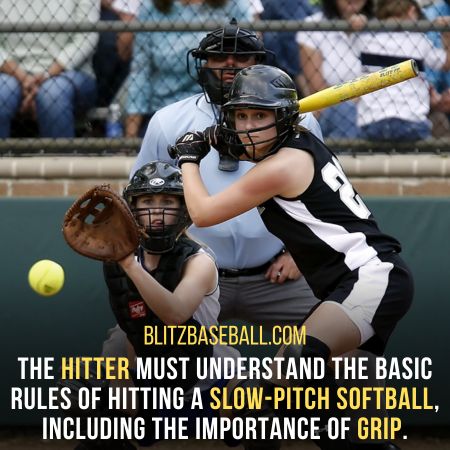If you want to know how to become a better slow-pitch softball hitter, there are a few key factors to keep in mind.
Understanding the basics, such as the rules of hitting and the importance of grip and hand/bat position, is crucial.
Mastering the swing technique and avoiding common mistakes is also essential.
Additionally, understanding launch angle and its impact on hitting with power can greatly improve your skills.
In this article, we will provide you with seven expert tips to help you become a more successful slow pitch softball hitter.
Key Takeaways
- Understanding the difference between slow pitch softball and baseball
- Mastering the basics of hitting a slow pitch softball, including grip and hand/bat position
- Learning about launch angle and its importance in hitting with power
- Studying successful softball players and their techniques for inspiration and improvement
How To Become A Better Slow-Pitch Softball Hitter?
The hitter must understand the basic rules of hitting a slow pitch softball, including the importance of grip and hand/bat position. These fundamentals form the foundation for a successful swing.
A proper grip ensures control and power, while the correct hand and bat position allow for proper contact and optimal bat speed. To achieve a solid grip, the hitter should hold the bat with relaxed fingers, placing the knuckles in line with the bat handle.
The top hand should be positioned near the end of the bat, with the bottom hand slightly higher up the handle. This grip promotes a strong and controlled swing.
Additionally, the hand and bat position should be in a comfortable and balanced stance, allowing the hitter to generate power and make solid contact with the ball.

Launch Angle and Swing Mechanics
Understanding launch angle is crucial for hitters looking to improve their power and hitting outcomes. To effectively grasp this concept, hitters should consider the following:
-
The optimal launch angle: Hitters should aim for a launch angle between 25-35 degrees to maximize power and distance on their hits.
-
Adjustments for different pitch types: Hitters need to understand how different pitch types can affect the ideal launch angle. For example, a high pitch may require a more uppercut swing to achieve the desired launch angle.
-
Fine-tuning swing mechanics: Hitters should focus on adjusting their swing mechanics to achieve the desired launch angle. This may involve working on their bat path, hand position, and timing to optimize their contact point with the ball.
Top Player Techniques
Studying the hitting techniques and strategies of successful softball players can provide valuable insights for improving as a hitter.
Observing top players in action allows aspiring hitters to learn from their approaches and adopt effective techniques. By analyzing their mindset and work ethic, one can gain inspiration to enhance their own batting skills.
Top players have honed their techniques through countless hours of practice, which is a key element in becoming a better hitter. Additionally, understanding the importance of confidence and the significance of practice can make a significant difference in one’s performance at the plate.
It is also beneficial to consider equipment recommendations and techniques for achieving a strong hit. By immersing oneself in the techniques of top players, hitters can elevate their game and become more successful in slow pitch softball.

Tips for Improvement
Practicing with confidence and utilizing recommended equipment can greatly enhance a player’s hitting skills in slow pitch softball. When it comes to improving hitting, here are some tips to keep in mind:
Technique is key:
- Focus on proper grip and hand/bat position.
- Master the swing technique, including weight transfer and follow-through.
Develop a strong mindset:
- Build confidence by visualizing successful hits.
- Stay positive and learn from mistakes, rather than dwelling on them.
By following these tips, players can improve their hitting skills and become more successful in slow pitch softball.

Frequently Asked Questions
How can I improve my timing when hitting slow pitch softball?
To improve timing when hitting slow pitch softball, the hitter should focus on tracking the pitch from the pitcher’s hand, maintaining a balanced stance, and practicing timing drills. Consistent practice and repetition will help develop better timing and improve overall hitting performance.
What are some strategies for reading the pitcher’s delivery in slow pitch softball?
To read the pitcher’s delivery in slow pitch softball, hitters should focus on the pitcher’s arm and body movements, as well as the release point. By paying attention to these cues, hitters can anticipate the pitch and adjust their timing and swing accordingly.
Are there any specific drills or exercises that can help improve bat speed in slow pitch softball hitting?
To improve bat speed in slow pitch softball hitting, players can incorporate specific drills and exercises into their practice routine. Examples include using a weighted bat, performing resistance band exercises, and focusing on explosive lower body movements during swings.
How can I improve my ability to hit different types of pitches in slow pitch softball?
To improve the ability to hit different types of pitches in slow pitch softball, focus on practicing pitch recognition and adjusting your swing accordingly. Work on timing, hand-eye coordination, and adjust your stance and swing mechanics to adapt to different pitch speeds and locations.
Are there any mental techniques or strategies that can help improve focus and concentration while hitting in slow pitch softball?
To improve focus and concentration while hitting in slow pitch softball, players can use mental techniques such as visualization, deep breathing, and positive self-talk. These strategies can help players stay present and focused on the task at hand.
